As climate change intensifies and urbanisation accelerates, cities around the world are increasingly defined by water. In some cases they have too little, sometimes too much, or sometimes water that’s too dirty.
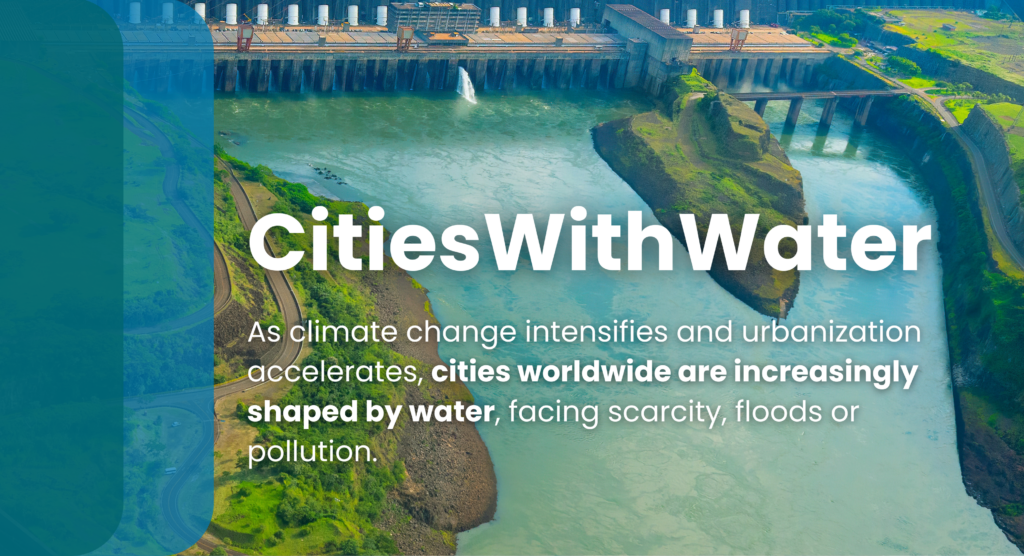
The CitiesWithWater initiative has placed water firmly on the urban sustainability agenda. Through a webinar series and an international photography competition, CitiesWithWater is raising the voice of cities and learning how they can and should act now to safeguard water systems, human well-being and ecosystems.

In the recent webinar titled “Too Much“, hosted in collaboration with the World Water Council, city leaders and technical experts explored how urban areas are preparing for or recovering from floods, storms, sea-level rise and the cascading impacts of climate change. This second installment in the CitiesWithWater series followed the success of the first (“Too Little”) and sets the stage for the upcoming webinar, “Too Dirty”, which will delve into water pollution and the urgent need to protect downstream ecosystems and coastal waters.
The “Too Much” webinar (18 June 2025) highlighted that flood-related disasters have increased by 134% since 2000 (WMO, 2021), a statistic that no city can afford to ignore. Panellists from cities including Kumamoto (Japan), Lusaka (Zambia), Ningbo (China), and Larissa (Greece) shared powerful case studies on how their municipalities are adapting to flood risks.
What happens upstream doesn’t stay upstream. With the UN Ocean Conference (UNOC) recently reaffirming the vital links between terrestrial and marine systems, CitiesWithWater is also working to bridge the gap between urban water governance and coastal health. Dirty or excessive water from cities — be it stormwater, untreated sewage, or plastic waste — flows downstream, posing major threats to fragile estuaries, coral reefs and fisheries.
In the upcoming “Too Dirty” webinar, these linkages will be explored more deeply. How can cities protect downstream ecosystems from pollution while safeguarding human health and livelihoods? What does it take to reduce nutrient runoff, manage industrial discharge and treat wastewater effectively in dense urban settings?
With the Convention on Wetlands COP15 fast approaching in July 2025 in Victoria Falls, Zimbabwe, CitiesWithWater is also drawing attention to the vital role of urban wetlands. These ecosystems, often overlooked in city planning, act as natural sponges that absorb floodwaters, filter pollutants and recharge aquifers.
Wetlands also serve as critical habitat for biodiversity, cooling spaces for urban residents and buffers against sea-level rise and coastal storms. Yet urban expansion continues to degrade or destroy them. Between 1970 and 2015, 35% of the world’s wetlands were lost (Ramsar Global Wetland Outlook, 2018), and many that remain are under pressure from pollution, encroachment and climate change.
Cities that invest in wetland protection and restoration — like Cape Town’s rehabilitation of the Zandvlei Estuary or Kolkata’s use of its East Kolkata Wetlands for natural sewage treatment — are leading the way in reintegrating nature into urban water systems.
Urban water systems are not just pipes and pumps. They are the veins and arteries of a living city to sustain health, enable growth and connect communities. Yet they are under serious threat:
About the author:
Erik Hirschfeld is a well-known Swedish birder fortunate to live in Malmö. He is the author of several books, including The World’s Rarest Birds (2013) covering global bird conservation and Fåglarnas Malmö (2011), covering Malmö’s birds and their interaction with humans. He has served on bird record committees in Sweden, Jordan and the United Arab Emirates, and has been involved in several scientific expeditions, especially in the Middle East. Fifteen years ago he founded Vilda Malmö, initially a lose network of nature guides, in order to highlight Malmö’s natural environment to its residents. Today he spends his birding time between being an active bird bander, studying migration of seabirds, and running Scandinavia’s largest bird tour company, AviFauna. He frequently gives illustrated talks on birds to both beginners and professionals, and guides people interested in birds for Vilda Malmö.
Perched at the southern tip of the Scandinavian Peninsula, Malmö offers migratory birds a convenient shortcut across the water to Denmark and mainland Europe. Much like the famed Falsterbo, just 30 km down the coast, Malmö is perfectly positioned along a major migratory route. When on the move, many landbirds avoid vast bodies of water and instead funnel through areas with shorter crossings. Add the iconic Öresund Bridge into the mix, and you’ve got a ready-made flight path. On windy days, birds of prey can often be seen using the bridge as a navigational aid during their spring and autumn journeys.
But geography alone doesn’t explain Malmö’s birding success. Migrants won’t stop unless there’s a good reason to. That’s where Malmö’s clever city planning and habitat diversity come into play. The city is a patchwork of microhabitats catering to a dazzling variety of birds with different needs.

Red-necked Grebes
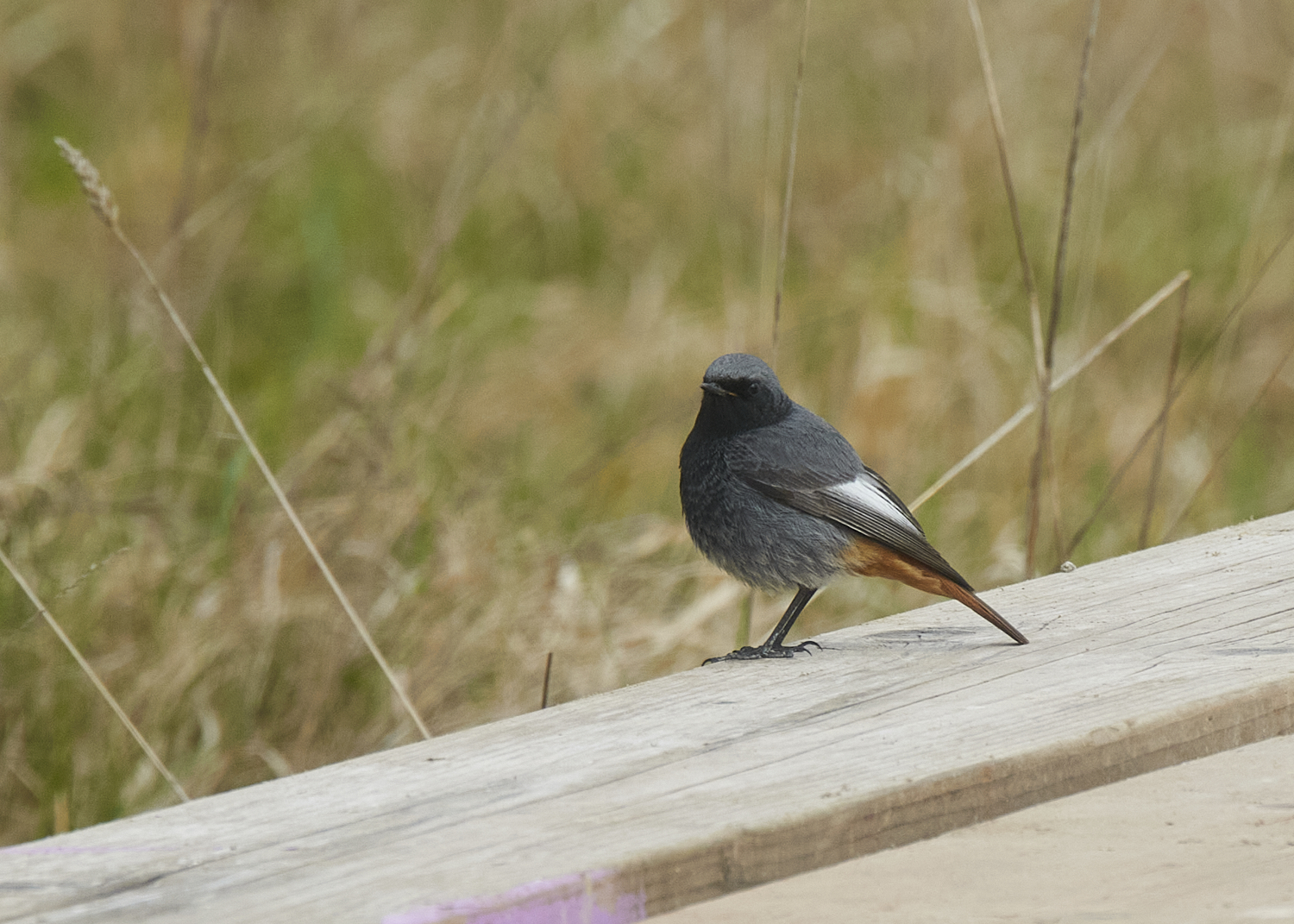
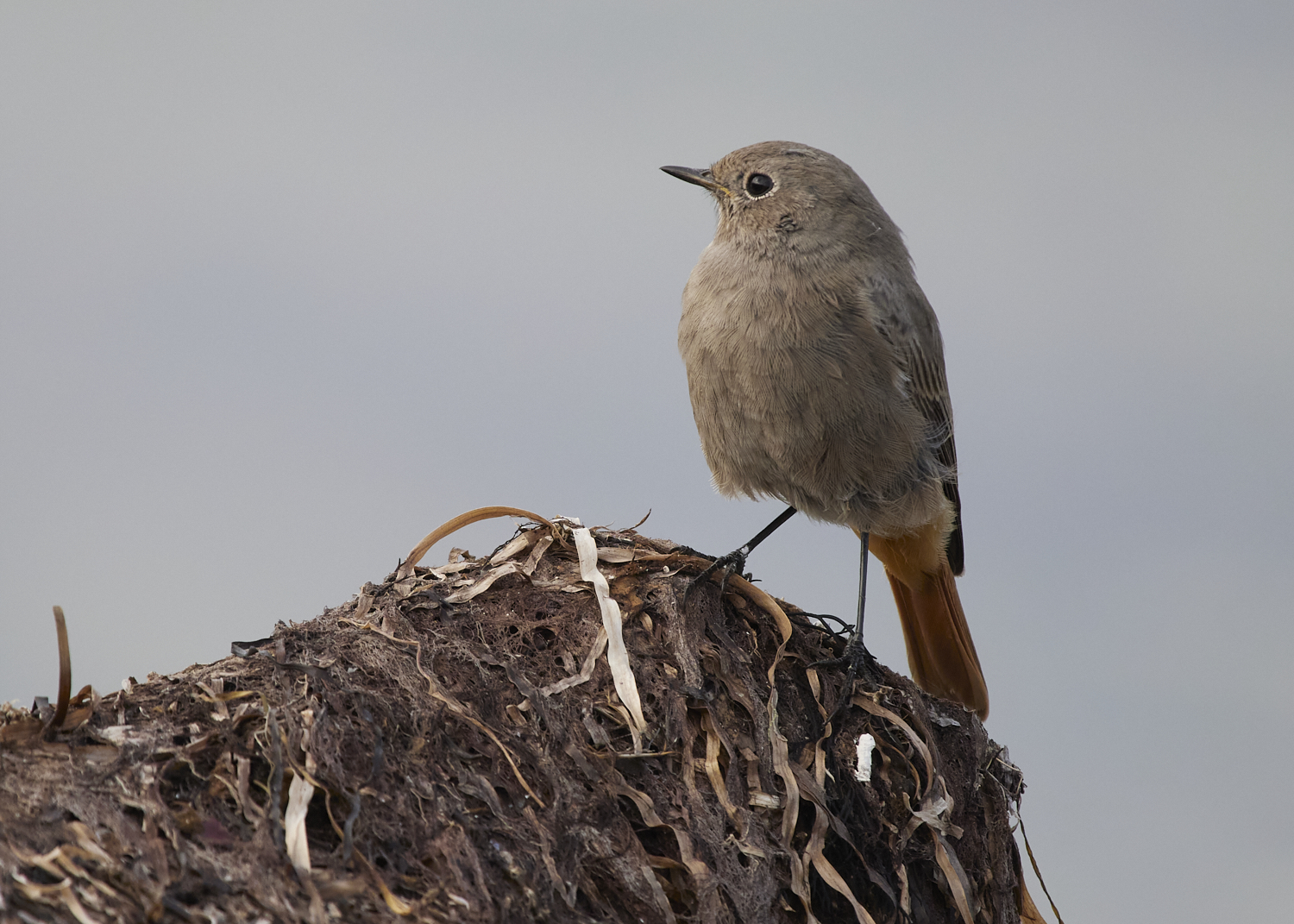
Black Redstarts (male & female)
Take the coastline, for instance. Stretching out in a mix of sandy, muddy, and rocky areas, it serves up a smorgasbord of habitats for wading birds, perfect for sanderlings, bar-tailed godwits, and purple sandpipers. In the harbour, boulders placed as wave-breakers become life-saving shelters for tired migrant passerines hiding from hungry sparrowhawks. Seabirds following the east-west coast are often seen rerouting dramatically to avoid land, providing unforgettable spectacles for those positioned at just the right windy vantage point. In fact, gannets now winter offshore in large numbers, mingling with massive flocks of cormorants. Two species of albatross have even made surprise appearances here, an astonishing rarity in these parts, and sooty shearwaters from New Zealand have become almost annual guests.
One of Malmö’s most productive hotspots is the stretch along Ribersborg Beach. Here, seaweed is cleared to please beachgoers and then dumped near a hedge by Lagunen harbour. That unassuming pile teems with insect life and sits beside a dense alley of trees, offering both food and shelter to weary warblers. Come migration season, that compost pile becomes a lifeline. It’s also the site of an ongoing bird banding project, and when the seaweed dries out, it’s used to fertilise Malmö’s public lawns, an example of ecology in action.
Inland, a series of freshwater ponds offers safe nesting and feeding areas to mute swans, little grebes, and the red-necked grebe, a striking species whose springtime courtship dances can be enjoyed up close, even without binoculars. These ponds give Malmö residents front-row seats to one of nature’s most theatrical performances.
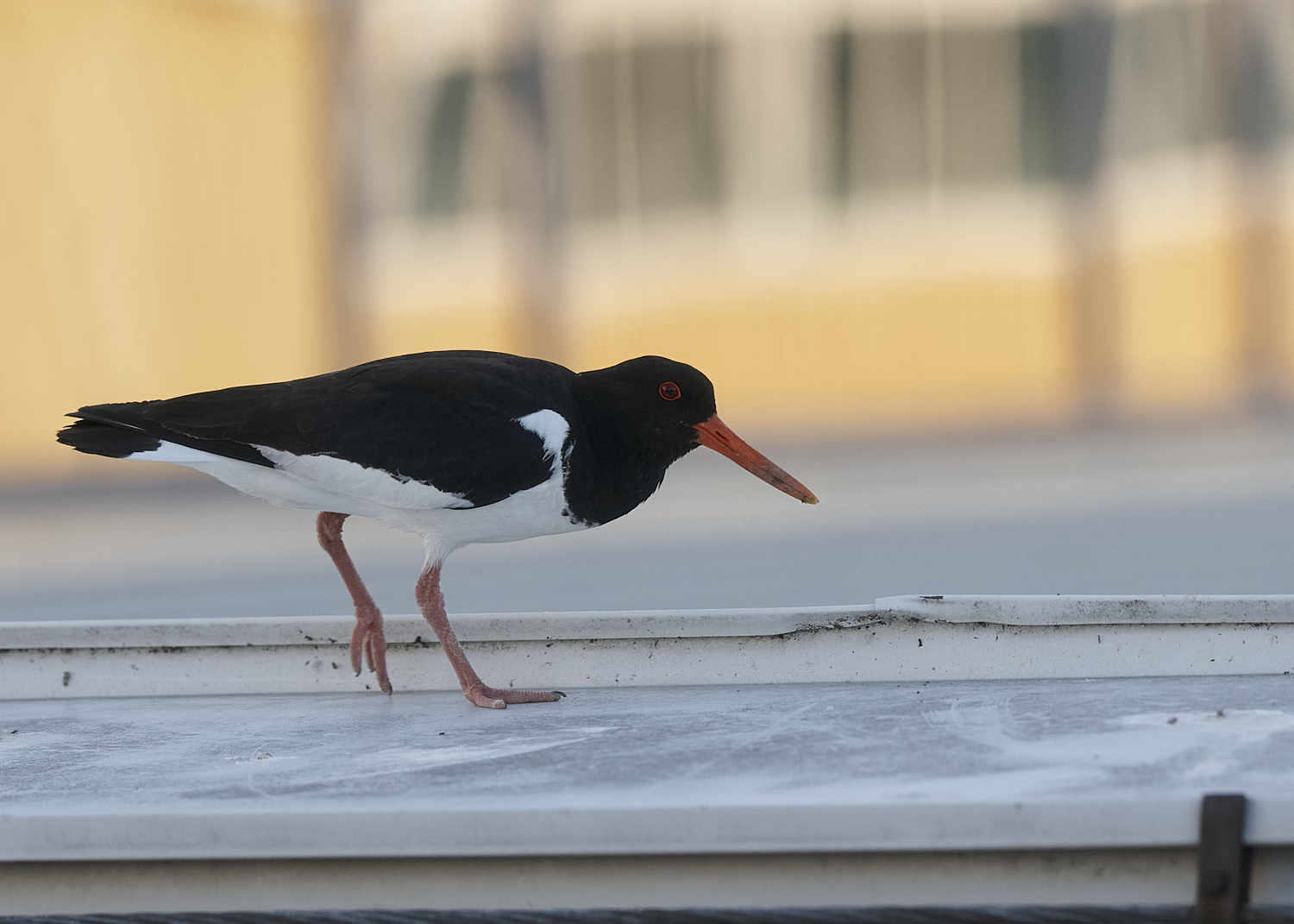
Oystercatcher
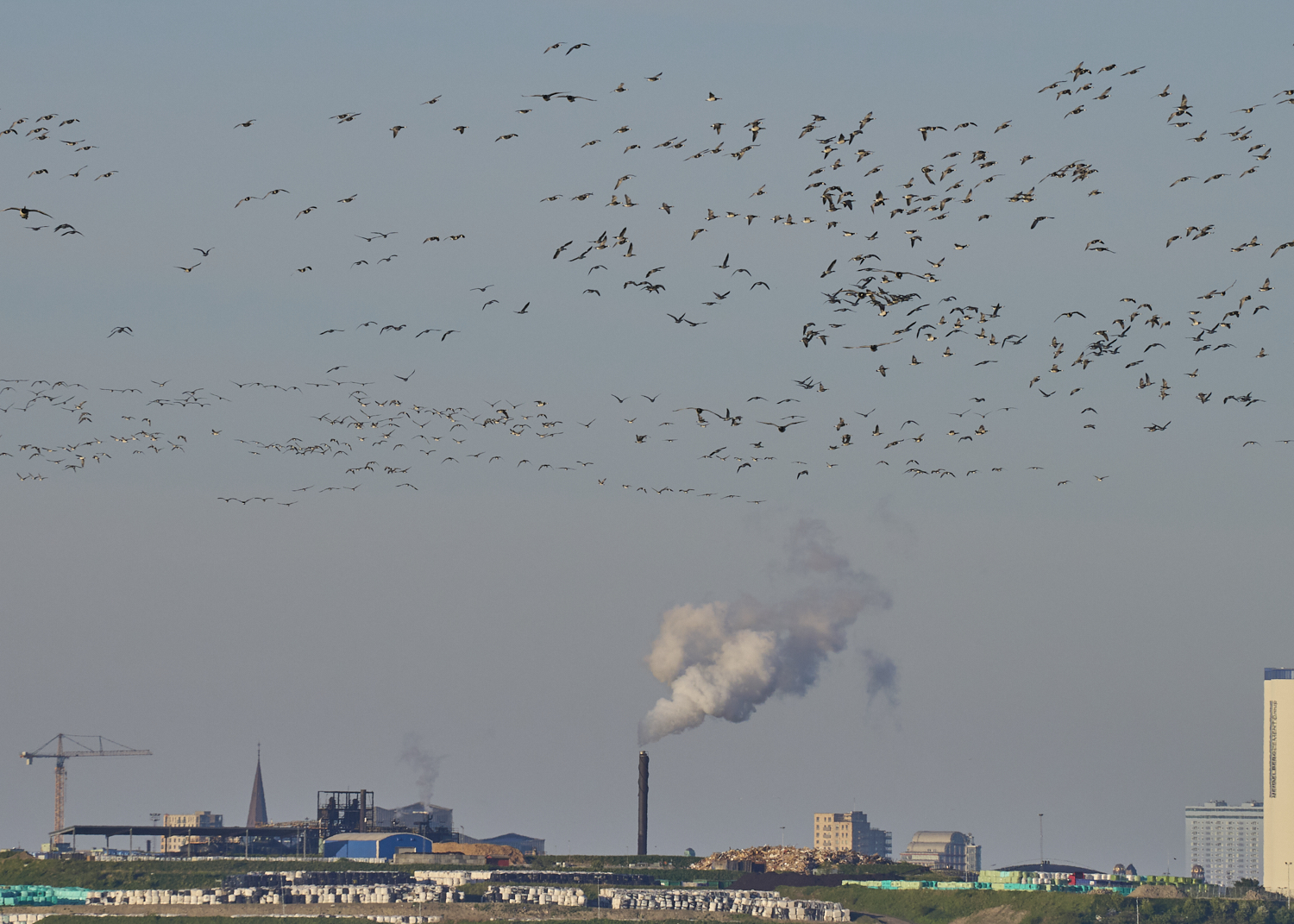
Barnacle Geese
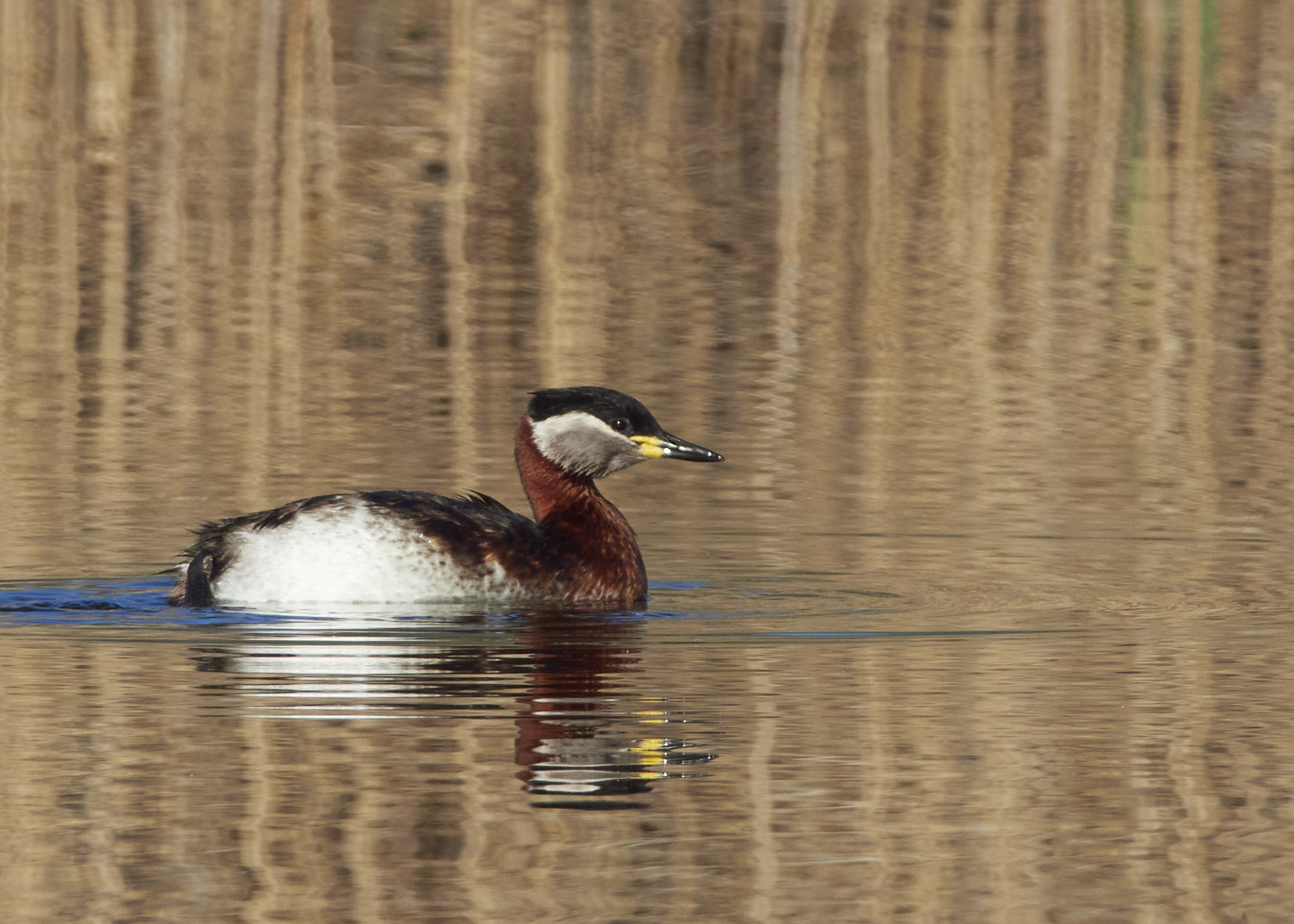
Red-necked Grebe
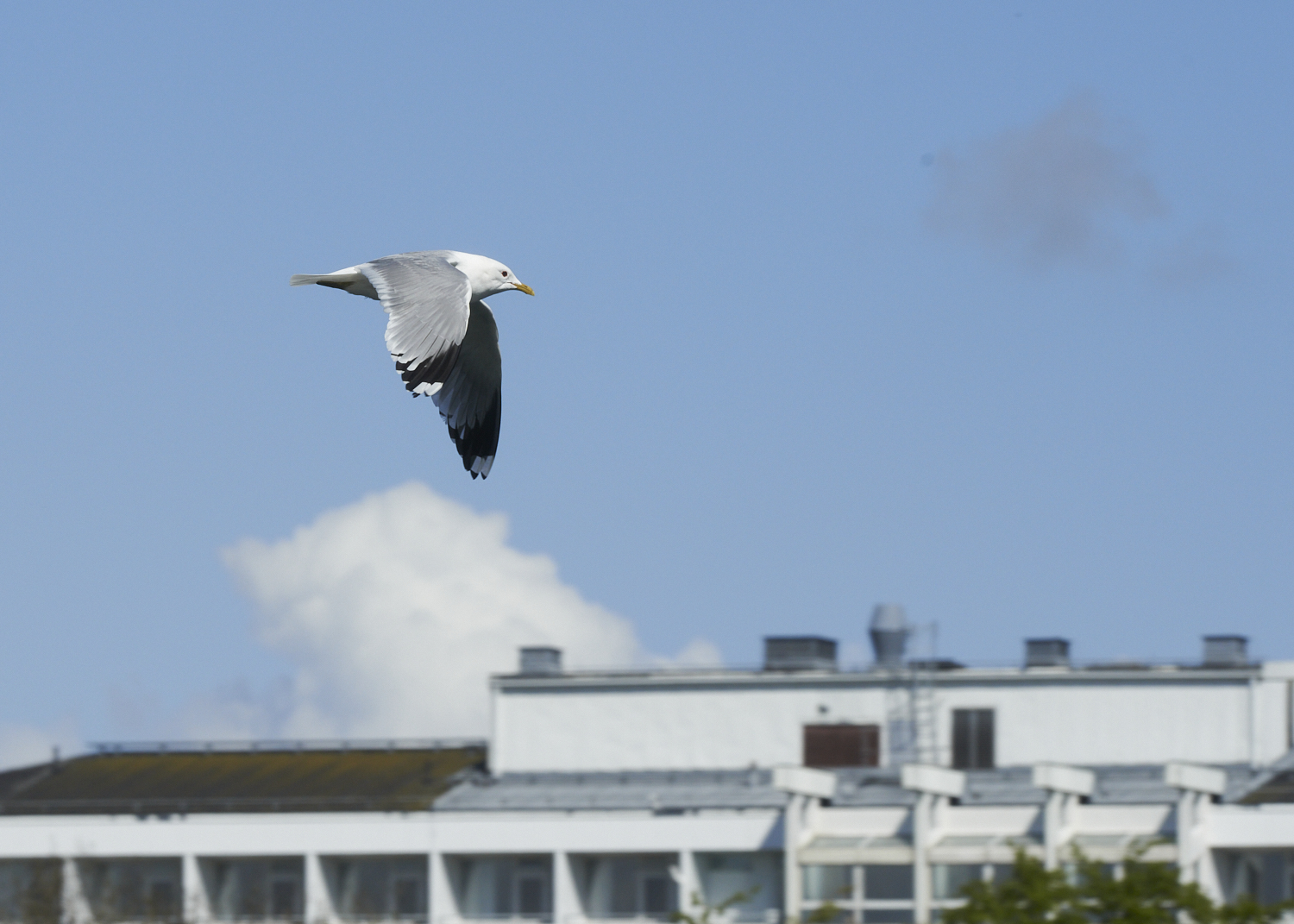
Common Gull
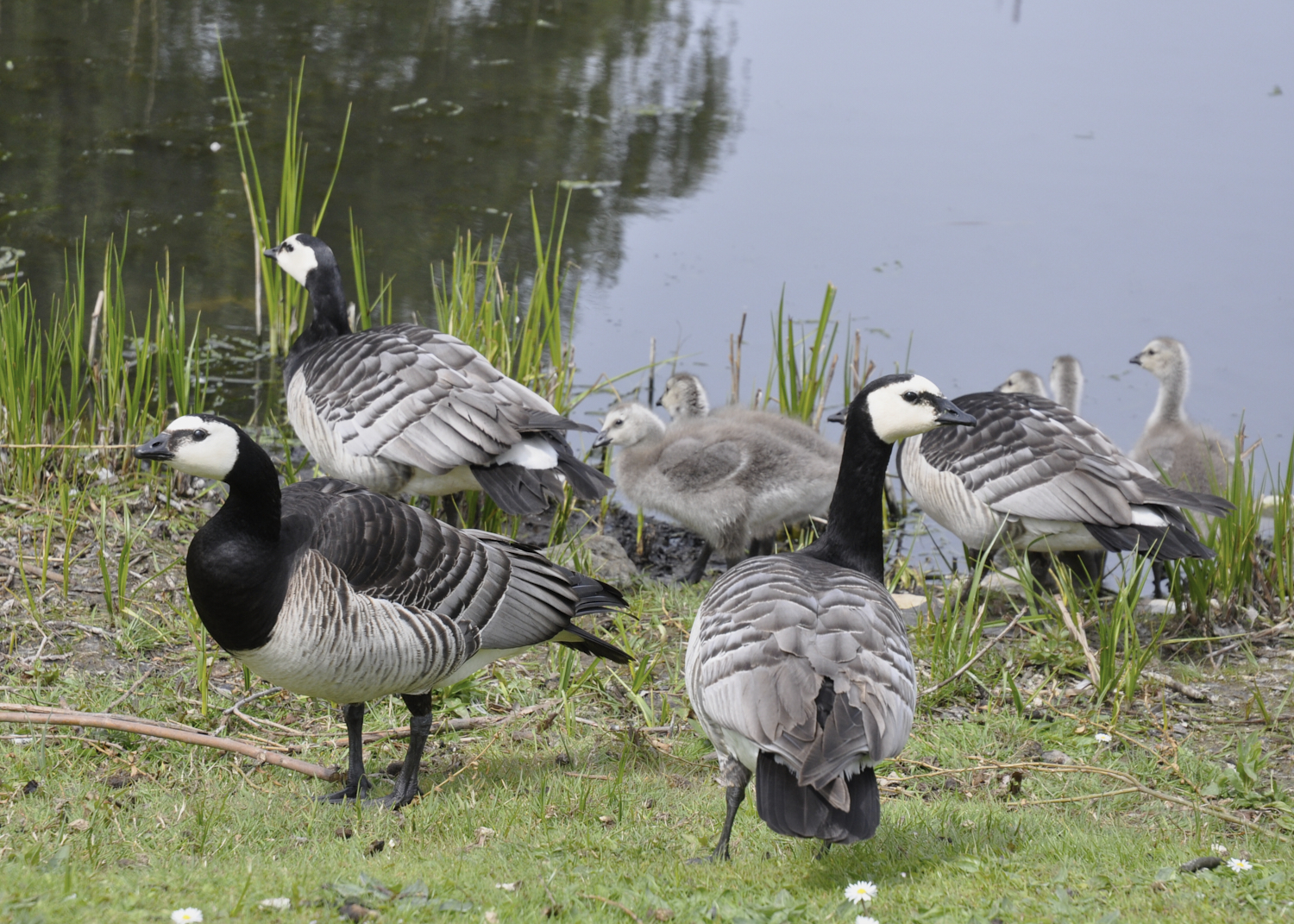
Barnacle Geese
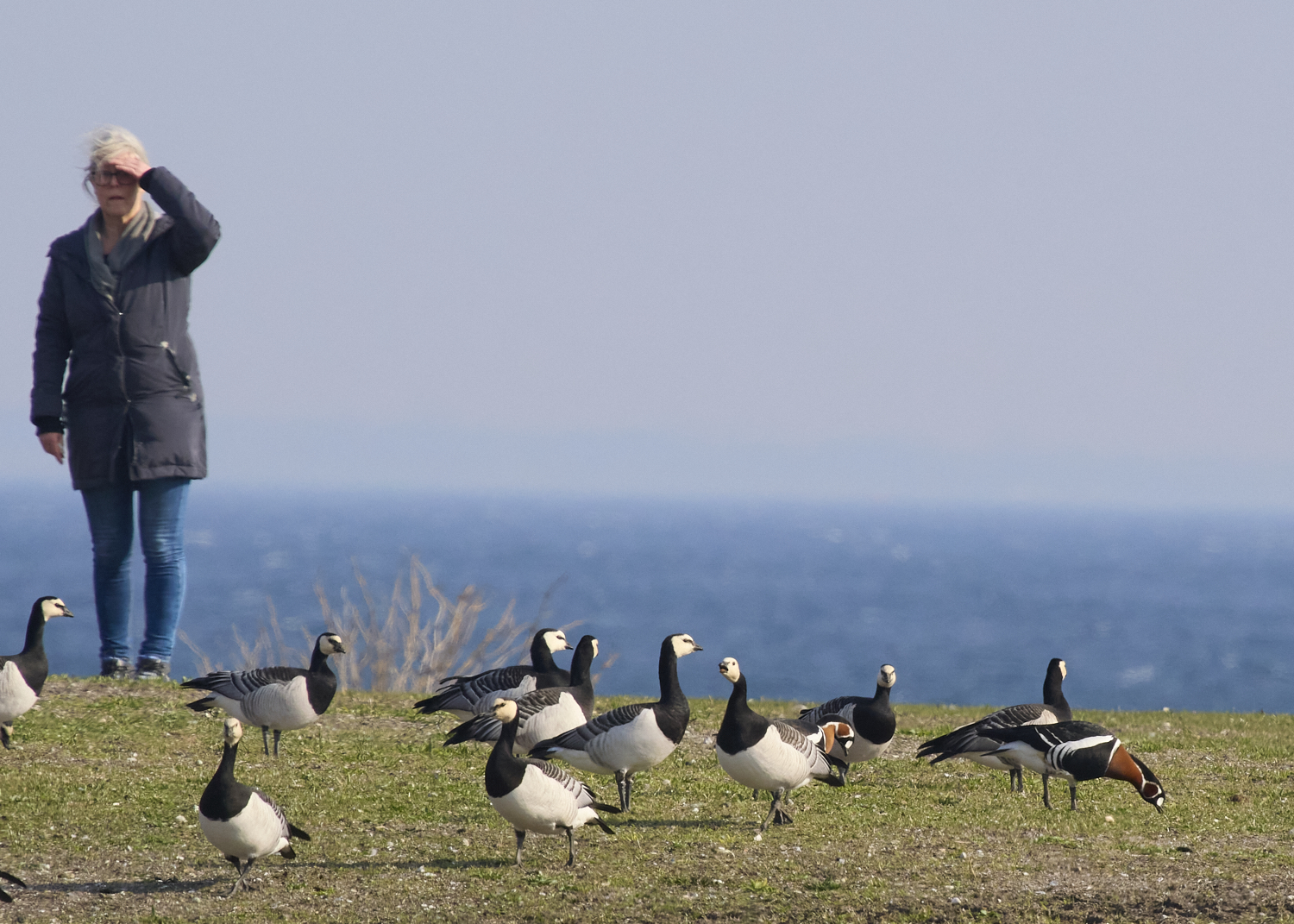
Barnacle Geese with two rare Red-breasted Geese
Every spring, a headline act unfolds in the city. Ravens nest in an old shipbuilding crane beside a waterfront residential zone, an urban first in Sweden. Unlike the domesticated Tower of London ravens, these are wild birds, voluntarily choosing Malmö’s industrial relics as breeding grounds.
The city’s beloved parks are no less impressive. Hammars Park, with its wild undergrowth, attracts songbirds like blackcaps, wood warblers, and goldfinches. Pildammsparken, with its elegant promenade and wide pond, plays host to ducks, gulls, and breeding great crested grebes showing off their curious greeting displays in spring. It’s a favourite among preschoolers, grandparents, and birders alike, offering easy access and rich wildlife. Slottsparken, meanwhile, offers a blend of trees and water that appeals to both breeders and migrants.
In late morning, gulls descend from the coast to bathe in the parks’ freshwaters. Tufted ducks and common gulls, with nesting grounds as far away as Siberia, make Malmö their winter base. Come late February, they’re joined by the first migrant lesser black-backed gulls, newly arrived from central and eastern Africa. Meanwhile, black-headed gulls spend the colder months here after journeys from Finland and the Baltics. Banded individuals, some as old as 30, have revealed fascinating life histories stretching across multiple cities and countries. The combination of being raised and spending the winter in highly urbanized habitats seems to be favorable to longevity.
St Pauli Cemetery, oriented north to south, is another seasonal hotspot, especially in spring. Here, you might glimpse the cryptic wryneck or the elusive ring ouzel, more commonly found in the remote fjells of summer. Redstarts regularly nest here too, making the cemeteries a true urban oasis.
Even Malmö’s high-rises play a part. Districts like Västra Hamnen, Dockan, and Limhamns Sjöstad resemble mountainous terrain to birds like the black redstart, which now echo their melodic calls through Malmö’s urban canyons. Some individuals even winter here, finding refuge in the evergreen ivy on buildings near the central station, alongside European robins.
The charismatic oystercatcher also makes its urban presence felt. Arriving in late February, they roost in flocks on jetties used by swimmers in summer before fanning out to nest on flat rooftops. Common gulls, meanwhile, often share these rooftops, while house martins and common swifts each have their architectural preferences. Clay nests on high buildings suit the martins, while the swifts prefer roof tiles on villas in Malmö’s western suburbs.
And let’s not forget the barnacle geese. Once Arctic-bound migrants, they now breed in Malmö in huge numbers, a mix of introduced birds and natural colonists. In May, local geese look skyward as their distant cousins pass overhead in dramatic, noisy formations, en route between the Low Countries and their Novaya Zemlya breeding grounds. Some Malmö-born geese have even been spotted in the Arctic, and vice versa.

Oystercatchers
Of course, the benefits of this biodiversity aren’t just for the birds. Access to urban nature is known to boost human well-being, and Malmö makes it easy to connect with the wild. Through the Vilda Malmö (Wild Malmö) program, residents can join free expert-led tours covering birds, bats, trees, marine life, and more, kept to small, intimate groups. For those who prefer to look for urban wildlife on their own, there are information signs placed around the city, with photos or drawings of the local fauna.
Malmö’s love of birds runs deep. Even its bird alert app, usually the domain of avid birders, has over 1,000 subscribers, proving that in this city, the skies above are just as captivating as the streets below.
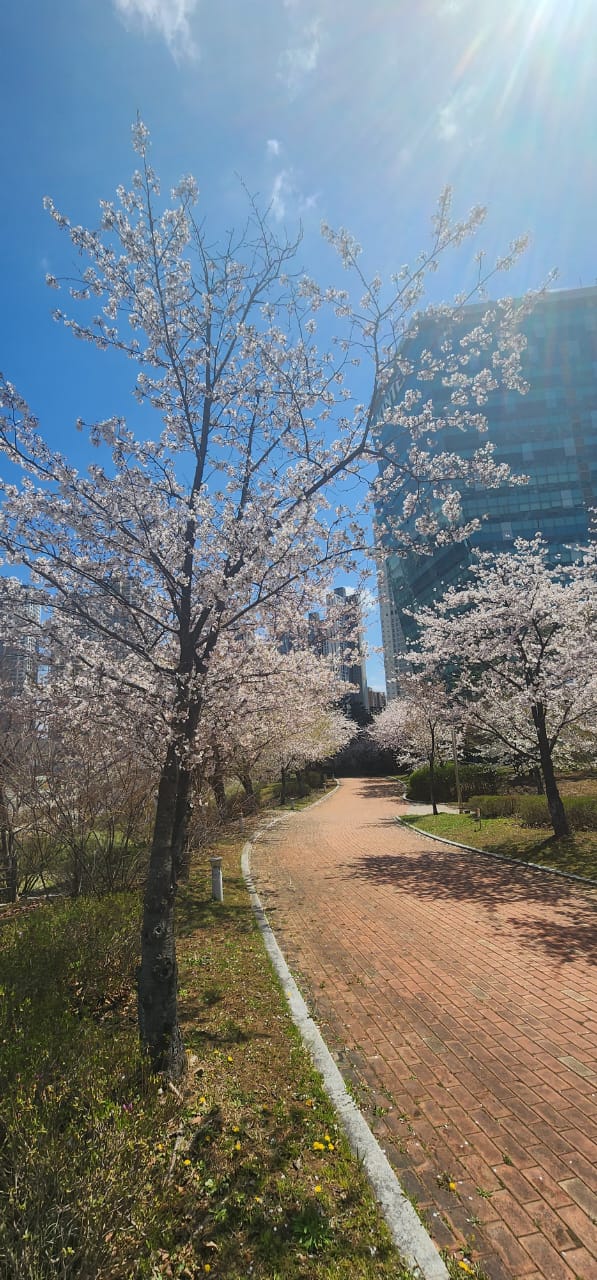
On Wednesday, 16 April, the ICLEI Korea Office took center stage at the “2025 World Local Government Climate Summit” with a special side event: the CitiesWithNature Capacity-Building Workshop for Korean Local Governments. This interactive session was designed to elevate understanding of the CitiesWithNature initiative and empower ICLEI member cities in Korea to fully engage with this pioneering platform. With around 13 local governments and institutions participating, the workshop spotlighted how local action can lead global change in biodiversity and nature-based solutions.
In her welcome address, Kobie Brand, ICLEI Deputy Secretary General, laid out ICLEI’s global vision for embedding biodiversity and ecosystem thinking into urban development. She traced the journey that led to the creation of CitiesWithNature, ICLEI’s flagship initiative, which envisions cities where nature and people thrive together. Emphasizing the importance of collective effort, Ms. Brand stated that no city can act in isolation. Building strong city partnerships, she said, is vital to secure a sustainable future for generations to come.
Recognized under the Convention on Biological Diversity (CBD), CitiesWithNature is not just another network, it’s a dynamic platform grounded in policy action and real-world implementation. Ms. Brand also considered the upcoming UNFCCC COP30 in Belém, Brazil, calling it the “Nature COP.” She underscored the urgent need to bridge the climate-biodiversity divide and placed local governments at the heart of this integration through CitiesWithNature.
“To act globally, it is important to build partnerships with local governments. CitiesWithNature will serve as a hub for collaboration and joint action between cities.”
~ Kobie Brand, Deputy Secretary General of ICLEI – Local Governments for Sustainability
Highlighting regional momentum, Ms. Miyeon Yoo, ecological expert from Yeoncheon County, Korea, shared how her county’s UNESCO-designated areas are aligning with the CitiesWithNature movement. Guided by a vision of “conservation tourism,” Yeoncheon has crafted a unique governance model for managing the Imjin River, now both a UNESCO Biosphere Reserve and Global Geopark. The county runs a variety of conservation, ecotourism, education and culture programs, with a strong focus on biodiversity monitoring and youth engagement.
Since joining ICLEI in 2023, Yeoncheon has rapidly grown its international profile, co-hosting events like the “Yeoncheon UNESCO International Symposium for Future Generations” and featuring in the CitiesWithNature Guide Nature Values and Valuation for Cities. In 2024, the Imjingang River area was also designated as a Flyway Network Site under the East Asian–Australasian Flyway Partnership (EAAFP). Yeoncheon is now preparing to launch the Yeoncheon UNESCO Center, which will serve as a key base for expanding its nature-based development strategies and a model for other Korean cities.
From China, Ms. Ge Liu, Strategic Manager at the ICLEI East Asia Secretariat, highlighted the country’s leadership in biodiversity policy. As the co-host of CBD COP15, China elevated its “Ecological Civilization” strategy and rallied local governments across the country to join CitiesWithNature. Thanks to these efforts, 26 Chinese cities joined the platform following COP15 and COP16, with several recognized as “Biodiversity Charming Cities” for their leadership and innovation.
China’s strong presence at the 7th Summit for Subnational Governments & Cities, along with city-led events like “China Day,” demonstrates a powerful commitment to international biodiversity partnerships. Moving forward, Chinese cities are actively applying tools like the City Biodiversity Index (CBI) and Local Biodiversity Strategy and Action Plans (LBSAPs), with ICLEI support, to turn national ambitions into local action.
Minwoo Chun of ICLEI Korea took the stage to introduce the practical tools and strategies available through CitiesWithNature. Chief among them is the Action Platform, a powerful mechanism that helps local governments align their goals with the Global Biodiversity Framework (GBF) adopted at CBD COP15. Through this tool, cities can declare nature-based commitments, set measurable goals, and transparently track progress, demonstrating the subnational push behind the global biodiversity agenda.
With the official launch of the CitiesWithNature program in Korea this year, ICLEI Korea is preparing a series of practical resources including issue briefs, dialogue reports, guides, and case studies designed to inspire and equip local policymakers. Best practices from Korean cities will also be amplified on the global stage through ICLEI networks, creating a cycle of learning and inspiration.
To support this evolution, ICLEI Korea is transforming its Strategic Planning Team into the “Climate and Nature Team” starting in 2025, signaling a deeper commitment to integrated action on climate and biodiversity. As implementation of both the Paris Agreement and the GBF accelerates, such convergence is no longer a choice – it’s a necessity. ICLEI Korea stands ready to champion biodiversity-forward cities through CitiesWithNature in the years ahead.
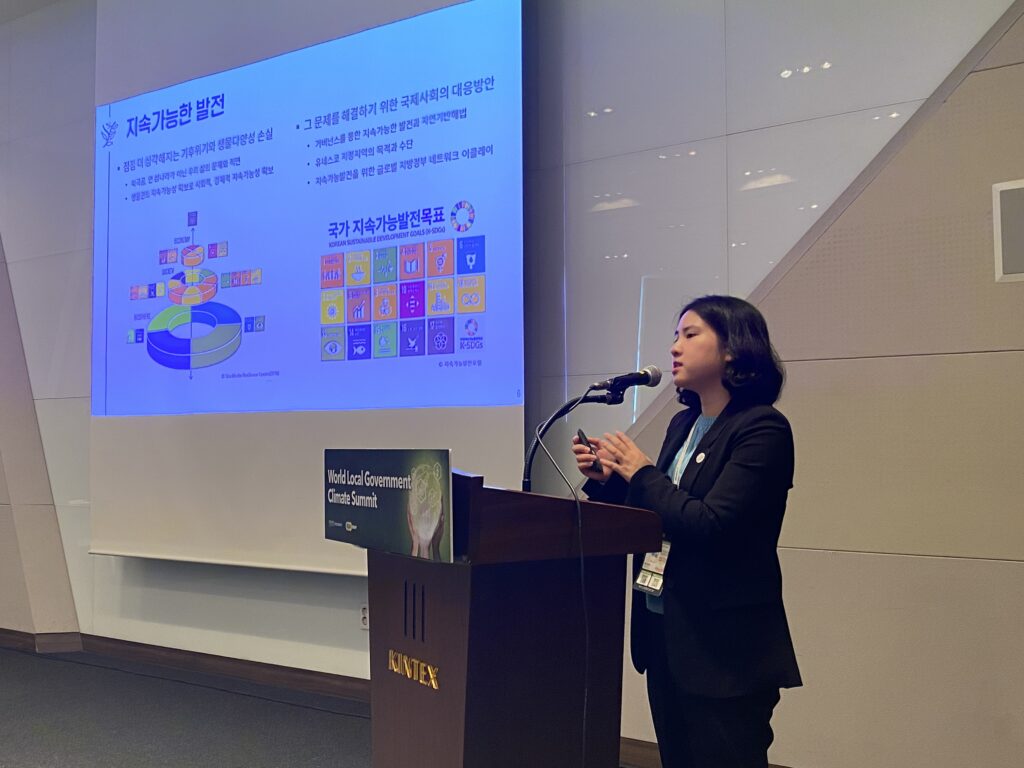
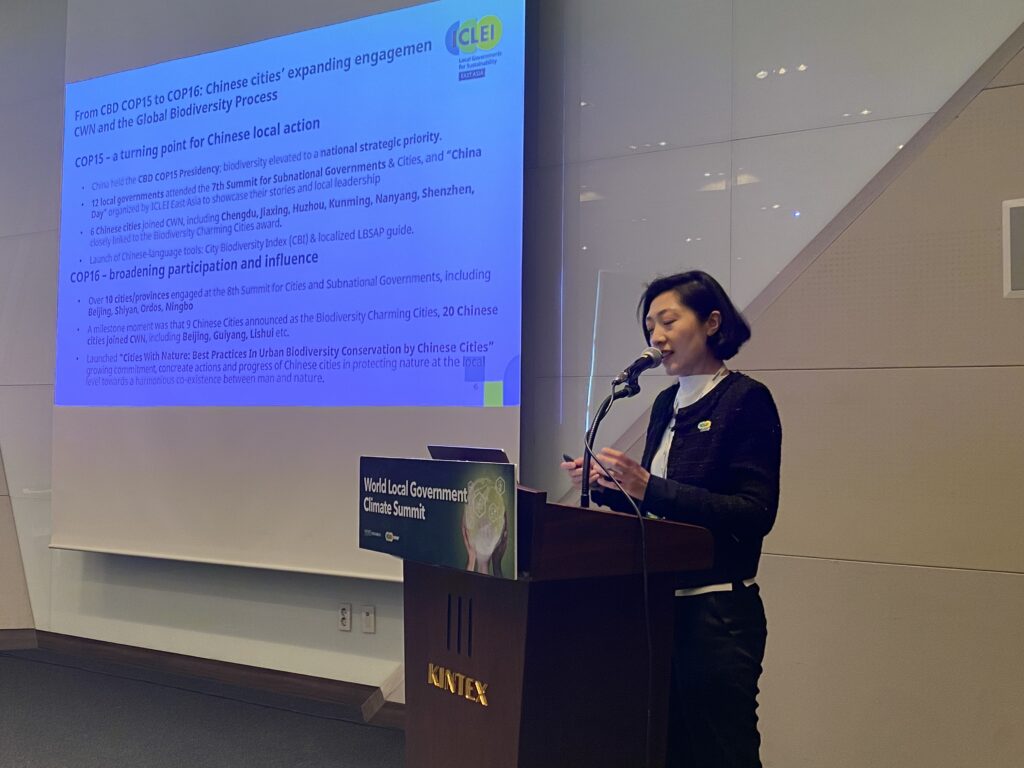

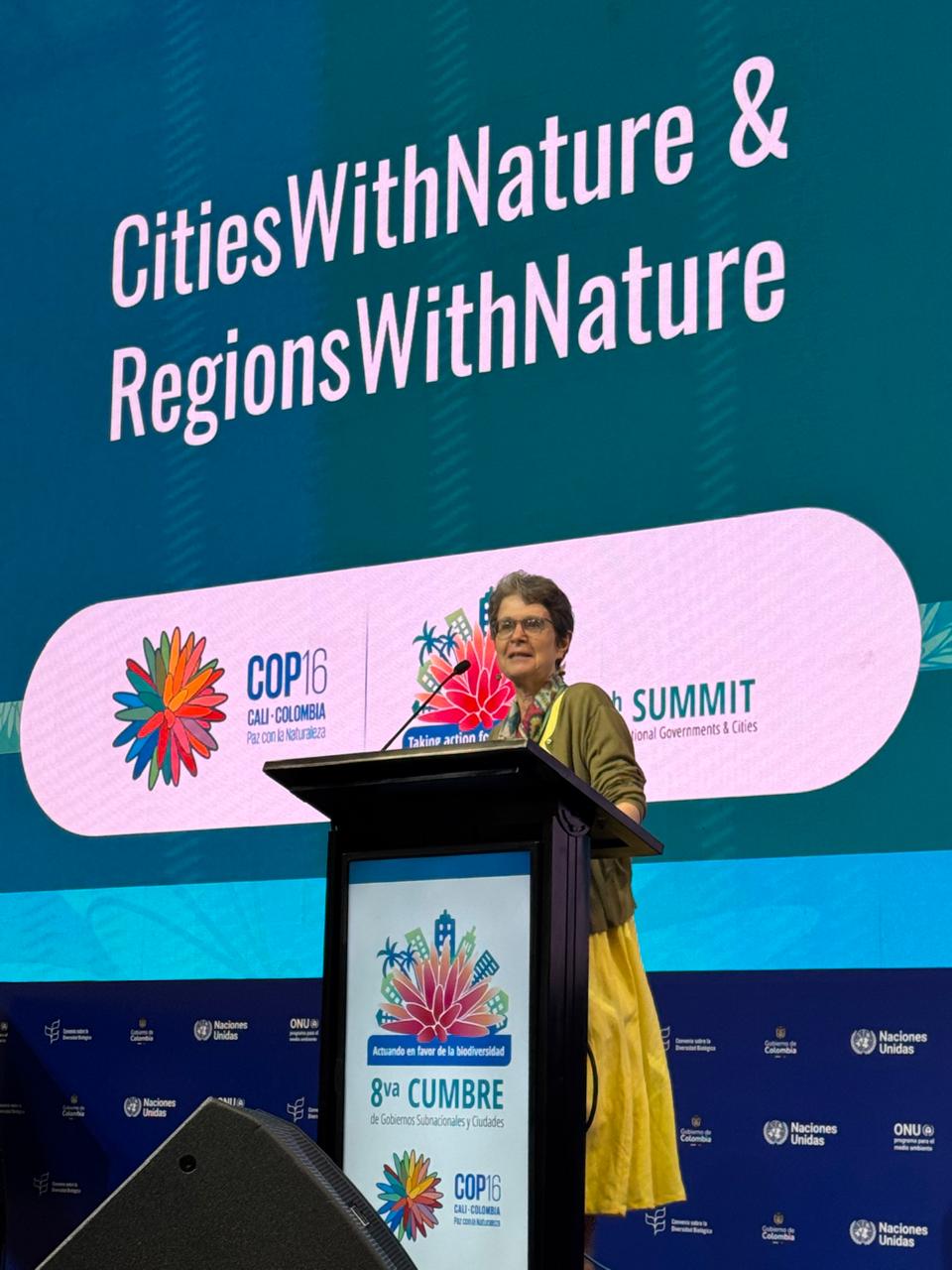
Ingrid Coetzee, Director, Nature Biodiversity & Health, ICLEI CBC
The 16th Conference of the Parties to the Convention on Biological Diversity (CBD COP16) recently took place in Cali, Colombia, bringing together governments and organizations from across the globe to address escalating biodiversity loss. While COP16 may not have concluded as hoped, many achievements were made.
Cities and regions were applauded as key actors that are stepping up to play a pivotal role in protecting natural ecosystems. At the forefront of these efforts are the CitiesWithNature and RegionsWithNature initiatives, which empower local and subnational governments to take concrete actions towards biodiversity conservation.
The 8th Summit for Subnational Governments and Cities, which took place on 26 October 2024 in the main plenary negotiation hall, brought together Governors, Mayors, and other subnational leaders from across the globe to collaborate with national officials and key stakeholders to discuss local and regional biodiversity initiatives, aimed at supporting the implementation of the Kunming-Montreal Global Biodiversity Framework (GBF) and the Plan of Action outlined in Decision 15/12.
The 8th Summit was widely lauded as a true demonstration of a whole-of-government and whole-of-society approach, and saw many key announcements relating to CitiesWithNature and RegionsWithNature. Additionally, Plaza Quebec at COP16, funded by the Government of Quebec, provided a vibrant space for all of the Major Groups, including subnational and local authorities, to hold dynamic sessions and discussions for the full two weeks of the COP.
CitiesWithNature and RegionsWithNature have become pivotal tools for implementing biodiversity strategies at multiple government levels. By creating a framework through which cities and regions can showcase and report on their progress, these platforms enable them to support National Biodiversity Strategies and Action Plans (NBSAPs) and contribute towards global biodiversity objectives. Today, over 350 cities and regions from 77 countries are part of these initiatives, with Beijing being the 350th member city, symbolizing China’s growing role in the global biodiversity movement. Several Chinese cities, all part of CitiesWithNature, that have significantly promoted local biodiversity initiatives were also recognized at the Summit for Biodiversity Charming Cities Best Practices. The most recent cities awarded this accolade are Anji City, Beijing City, Beilun District of Ningbo City, Lishui City, Ninghe District of Tianjin City, Ordos City, Shaoxing City, Shiyan City and Xiamen City.
In a landmark moment for global conservation efforts, over 100 new cities and regions have joined the CitiesWithNature and RegionsWithNature partnerships since COP15, demonstrating a growing commitment from local governments worldwide to address biodiversity challenges and contribute to the GBF. These initiatives, endorsed by the Secretariat of the Convention on Biological Diversity (SCBD), provide a collaborative platform where local and subnational governments can report on and track their contributions towards national and global biodiversity goals.
Cali, Colombia, host city of COP16 and co-host of the 8th Summit, also joined the CitiesWithNature initiative. “As Mayor of Cali, it’s an honor to be host of this historic moment, at a crucial point in time, in which nature is asking us to take important measures,” said Mayor Alejandro Eder. “It’s not a choice, but an imperative need, and not one that falls to a single country or government. Our planet is demanding we do more – and cities are at the center of this discussion. Cities are, and will be, the epicenter of change: We have the creativity, talent and will to protect our planet, starting right here in cities.”
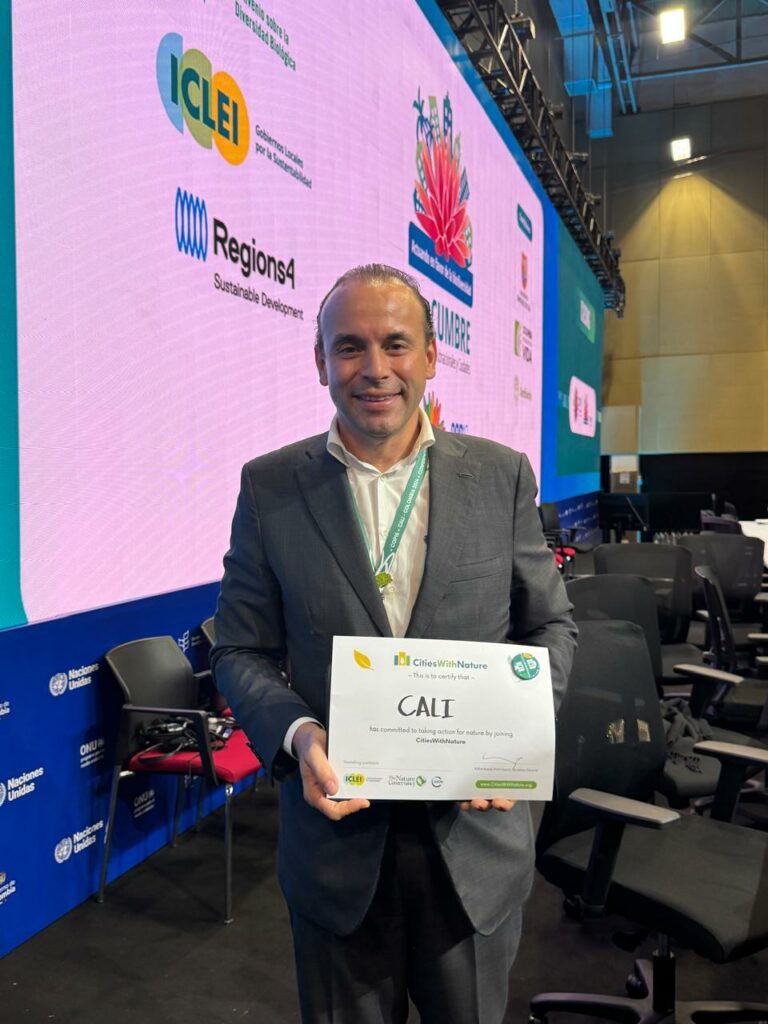
Alejandro Eder, Mayor of Cali, Colombia
One of the most significant announcements made at the recent Summit came from Brazil, where the Brazilian Association of State Environmental Entities (ABEMA) declared that every state in the country would be joining the RegionsWithNature initiative. This historic step makes Brazil the first nation to have all its states sign up for RegionsWithNature. This collective commitment highlights Brazil’s recognition of the critical role of regional governance in biodiversity protection, and aligns with the country’s dedication to preserving its rich ecosystems and natural heritage.
Recognizing the need to provide a platform that addresses the specific needs of regions, Regions4 and ICLEI launched the RegionsWithNature Action Platform, as part of the RegionsWithNature initiative, at the Summit. This sister initiative to CitiesWithNature is designed to empower regional governments to develop localized biodiversity actions. It serves as a valuable resource for regions to share knowledge, report achievements, and access support tailored to regional governance. The Government of Quebec, one of the founding members of RegionsWithNature, has played a crucial role in financing the platform, underscoring the significance of regional commitment and partnership in expanding the initiative’s reach and impact.
Started in 2016 as a competition between Los Angeles and San Francisco, the City Nature Challenge (CNC) has grown into an international event, motivating people around the world to find and document wildlife in their own cities. Run by the Community Science teams at the California Academy of Sciences and the Natural History Museum of Los Angeles County (NHM), the CNC is an annual four-day global bioblitz at the end of April, where cities are in a collaboration-meets-friendly-competition to see what can be accomplished when we all work toward a common goal. In 9 years, 7.13 million observations have been collected! The CitiesWithNature initiative was thrilled to welcome the City Nature Challenge onboard as a new partner at the 8th Summit.
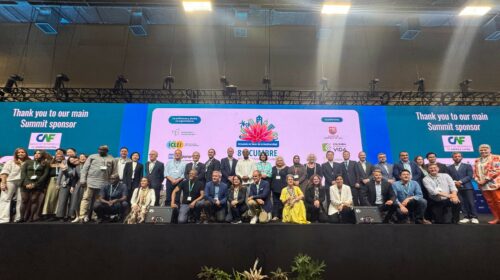


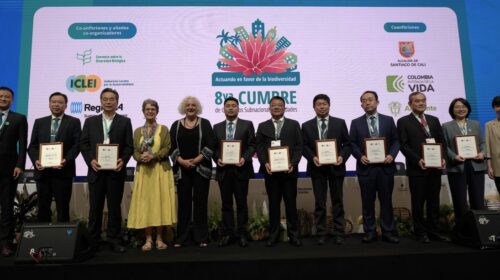
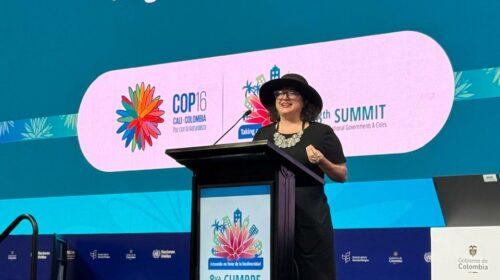





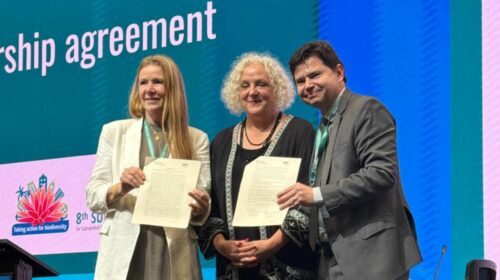
The CitiesWithNature and RegionsWithNature initiatives offer cities and regions globally a way to be accountable and transparent about their biodiversity commitments. With hundreds of cities and regions now part of these initiatives, the platform is well-positioned to help local and regional governments achieve their biodiversity goals, supporting a broader movement toward a sustainable and biodiverse future.
As these partnerships continue to grow, they underscore a critical insight: local and regional governments are key players in driving biodiversity preservation. By creating spaces for cooperation, knowledge exchange and accountability, CitiesWithNature and RegionsWithNature serve as essential tools in the global effort to protect natural ecosystems and ensure sustainable urban development. The steady growth in membership is a testament to the increasing recognition of these platforms and the shared global commitment to conserving our planet for future generations.

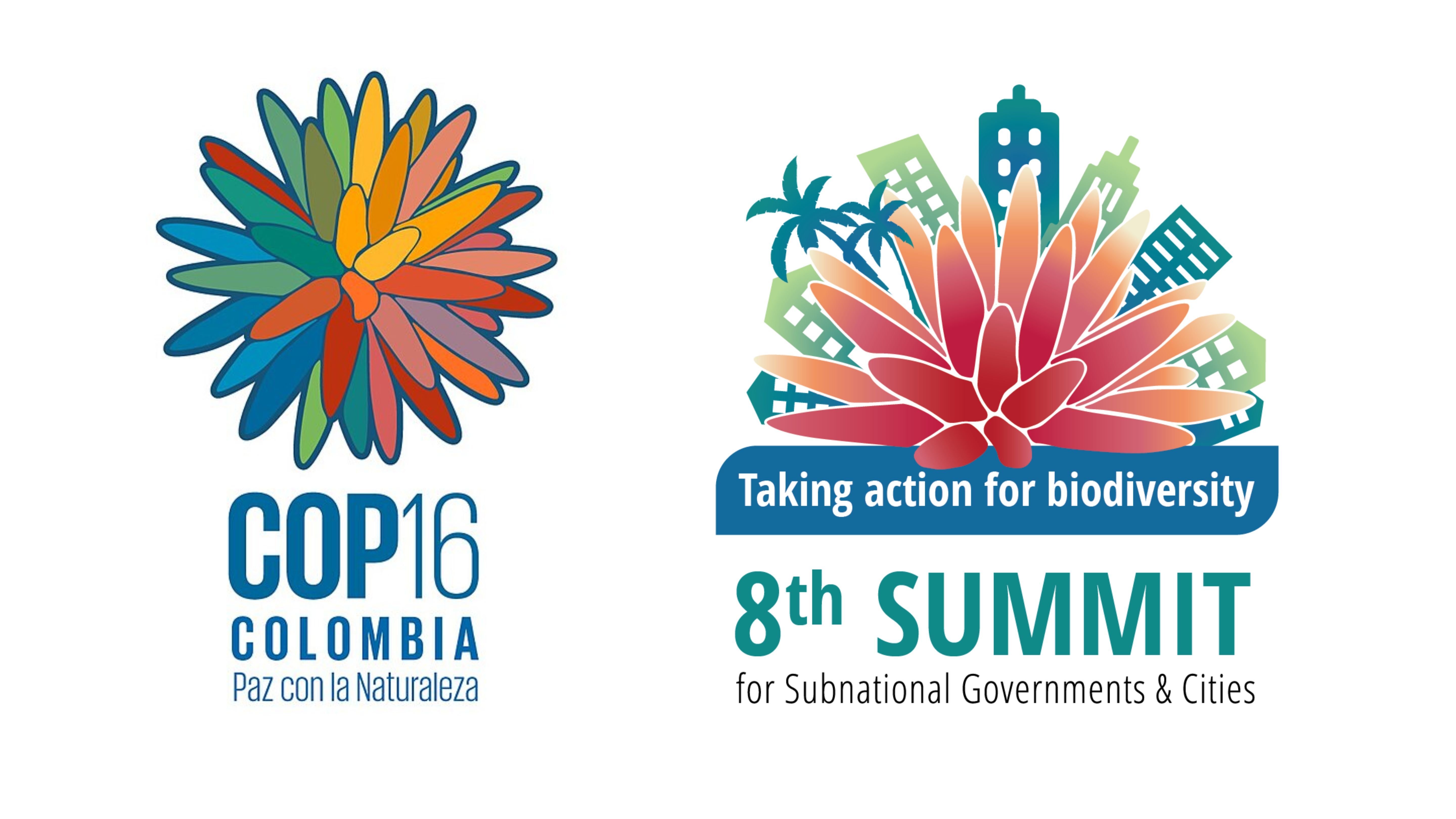
The 8th Summit for Subnational Governments & Cities: Taking Action for Biodiversity will gather Governors, Mayors and other subnational government leaders from around the world to engage directly with national leaders and their key stakeholders during the 16th Conference of the Parties of the Convention on Biological Diversity (CBD COP16). Engagements will focus on subnational biodiversity actions at the local and territorial scale, in contributing to the implementation of the Kunming-Montreal Global Biodiversity Framework (GBF) and the Plan of Action under Decision 15/12.
Explore innovative solutions, mechanisms and partnerships between subnational governments, cities, the private sector and Multilateral Development Banks to address the biodiversity finance gap.
Reflect on the progress made towards the implementation of the Global Biodiversity Framework (GBF) and Decision 15/12 Plan of Action, and other biodiversity-related Conventions and agendas.
Learn from best practices and innovative solutions from local and subnational governments and other stakeholders that promote peaceful coexistence with nature, fostering sustainable development and biodiversity conservation.
Hear firsthand about new initiatives and exciting announcements from a wide range of leading subnational governments, cities, their networks and partners, including the launch of the Community of Practice Against Criminal Economies Affecting Biodiversity by the Mayor of Cali. CitiesWithNature will also be announcing our new cities and partners.
Watch the livestream
For more information visit the official Summit page


40% of all plant and animal species live or breed in wetlands.
Wetlands play a significant role in supporting ecosystems and biodiversity, and they are deeply connected to human well-being. Although they cover only around 6 percent of the earth’s land surface, 40 percent of all plant and animal species live or breed in wetlands; and about one in eight people on earth depend on wetlands for their livelihoods (United Nations, 2024). Despite the benefits for both the environment and communities, wetlands face critical threats due to anthropogenic influences and are the planet’s most threatened ecosystem. This World Wetlands Day is an opportunity to recognize the value of wetlands and to advocate for better conservation efforts.
Critical to environmental sustainability, wetlands sequester more carbon than any other ecosystem (NOAA, 2023), thereby mitigating climate change. They also buffer against climate change impacts and provide resilience against extreme weather events such as storm surges and flooding. Furthermore, they serve as vital habitats for diverse species, supporting fish, reptiles, migratory birds, and mammals.
Wetlands are essential for key municipal functions, naturally purifying water, controlling floods and supplying sustainable fresh water. They foster economic and livelihood activities like tourism, fisheries, and agriculture, contributing to the overall prosperity of communities around the globe. Based on their central life-sustaining role for so many communities, wetlands are cherished by communities worldwide, enhancing social well-being, offering recreational opportunities, holding deep cultural and spiritual significance, and fostering community well-being and resilience.
Despite their myriad benefits, these valuable ecosystems are under siege from pollution and habitat loss from land use change. In the last five decades, over 35% of wetlands have been lost, significantly jeopardizing the ecosystem services and benefits for plants, animals, and human communities. With urban populations expected to grow from 55% (current) to 68% by 2050, wetland ecosystems are considered the most threatened ecosystem (Ramsar. 2021).

Wetlands are essential for key municipal functions, naturally purifying water, controlling floods and supplying sustainable fresh water.

There is an urgent need for drastic conservation efforts to protect these valuable ecosystems.
For cities and regions, recognizing the relevance of wetlands in urban and environmental planning is paramount. Integrating wetland management goals into municipal planning, policies, and decision-making processes is necessary for sustainable development.
In 2023, CitiesWithNature partnered with the Ramsar Convention, the UN Decade on Ecosystem Restoration and ICLEI CBC to develop a poster and fact sheet on the value of wetlands for cities. These resources shed light on the functional benefits of wetlands in terms of water resources, climate regulation, livelihoods and poverty reduction, healthy ecosystems and biodiversity, job creation and upskilling, and culture, recreation and education. The poster intricately illustrates these processes, for example, how wetlands support urban heat mitigation by cooling surrounding areas and providing valuable spaces that bolster a region’s ability to adapt and withstand the adverse impacts of a changing climate. The fact sheet also provides useful recommendations on how cities can enhance and protect the benefits supplied by these vital ecosystems, such as conducting a stocktake of past and current wetlands management, developing integrated development plans and allocating appropriate budgets, and regulating land-use and development.
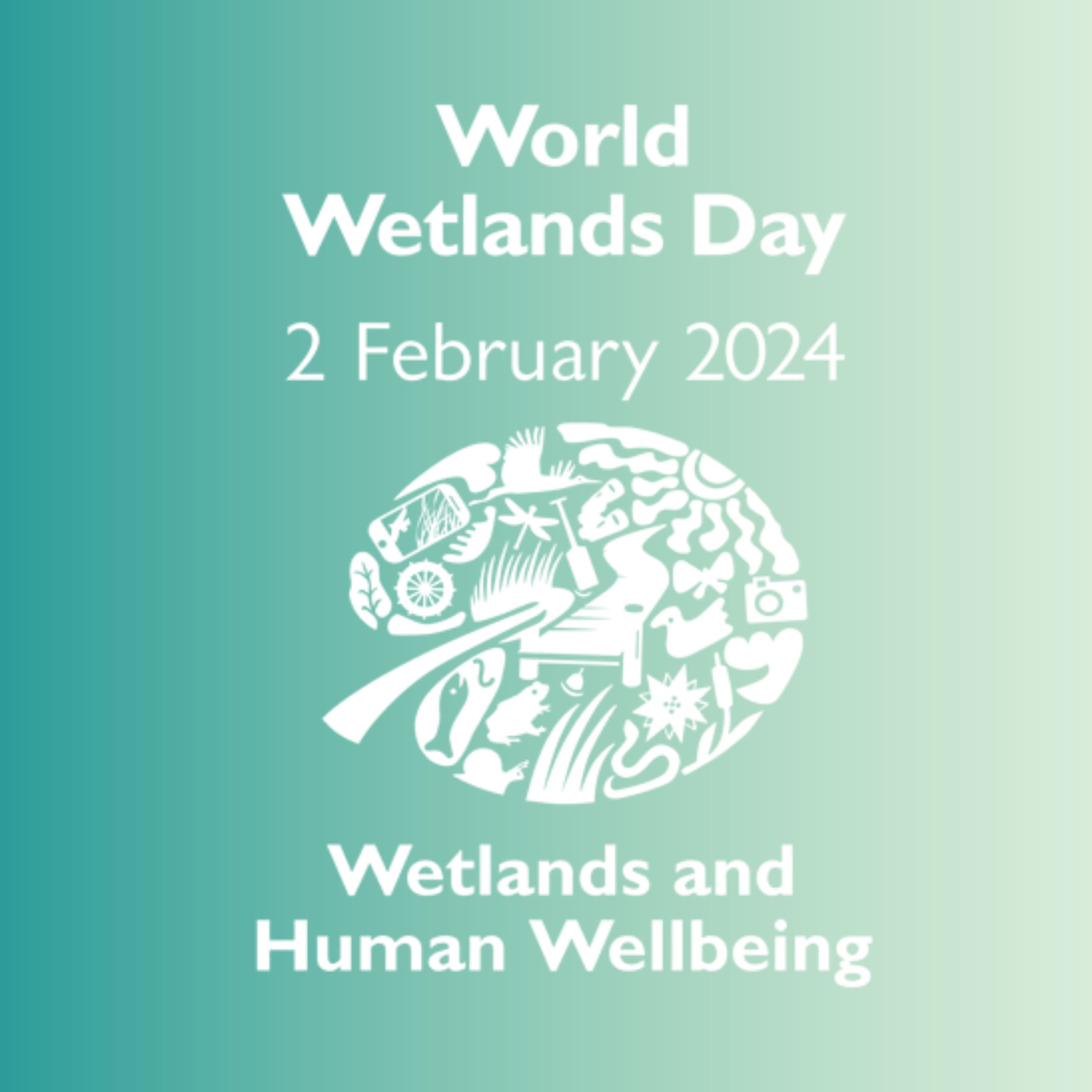
Given the critical role wetlands play in enhancing the quality of life for cities and communities, it is imperative that we recognize the value of wetlands, integrate wetlands protection into planning and policy agendas, and support active participation in conservation efforts and sustainable practices. World Wetlands Day serves as a call to action to secure a sustainable and resilient future for wetlands and the communities they support.
References:
NOAA. 2023. Coastal Blue Carbon. Available online: https://oceanservice.noaa.gov/ecosystems/coastal-blue-carbon/#:~:text=Current%20studies%20suggest%20that%20mangroves,equivalent%20area%20than%20tropical%20forests.
Ramsar. 2021. Global Wetland Outlook: Special Edition 2021. Available online: https://www.global-wetland-outlook.ramsar.org/report-1
United Nations. 2024. Life interlaced: wetlands and people. Available online: https://www.un.org/en/observances/world-wetlands-day#:~:text=Though%20they%20cover%20only%20around,for%20tourism%20and%20for%20jobs.